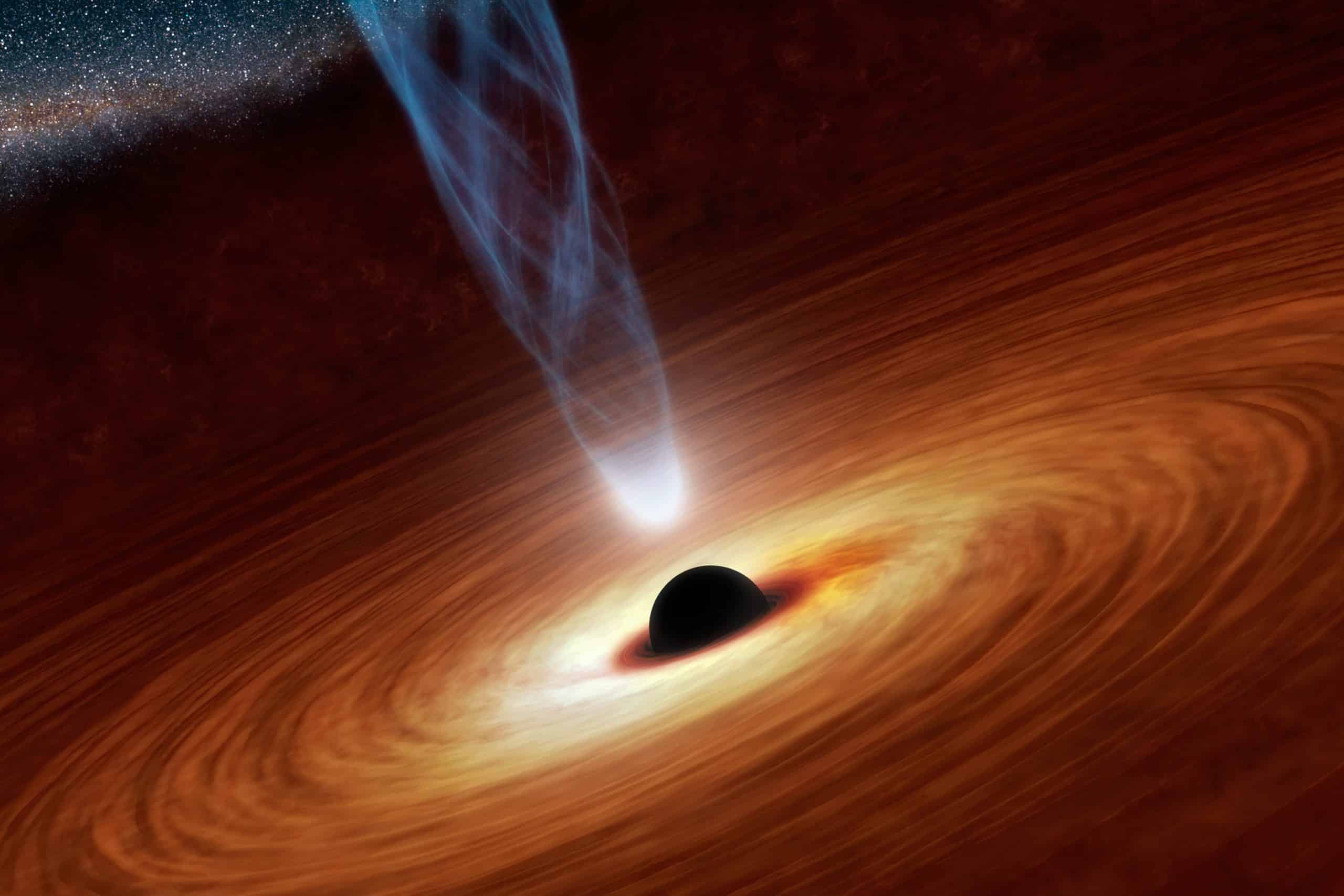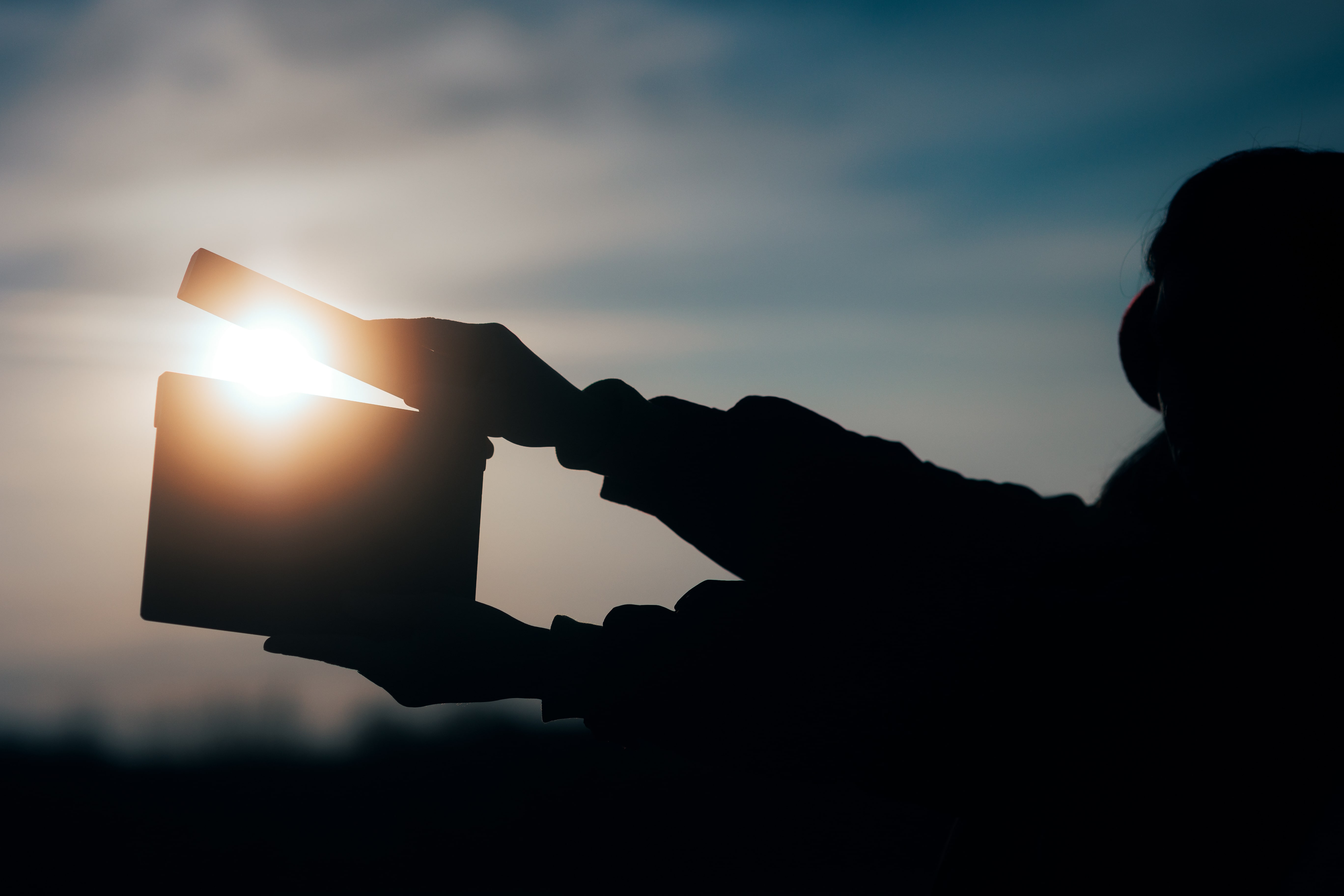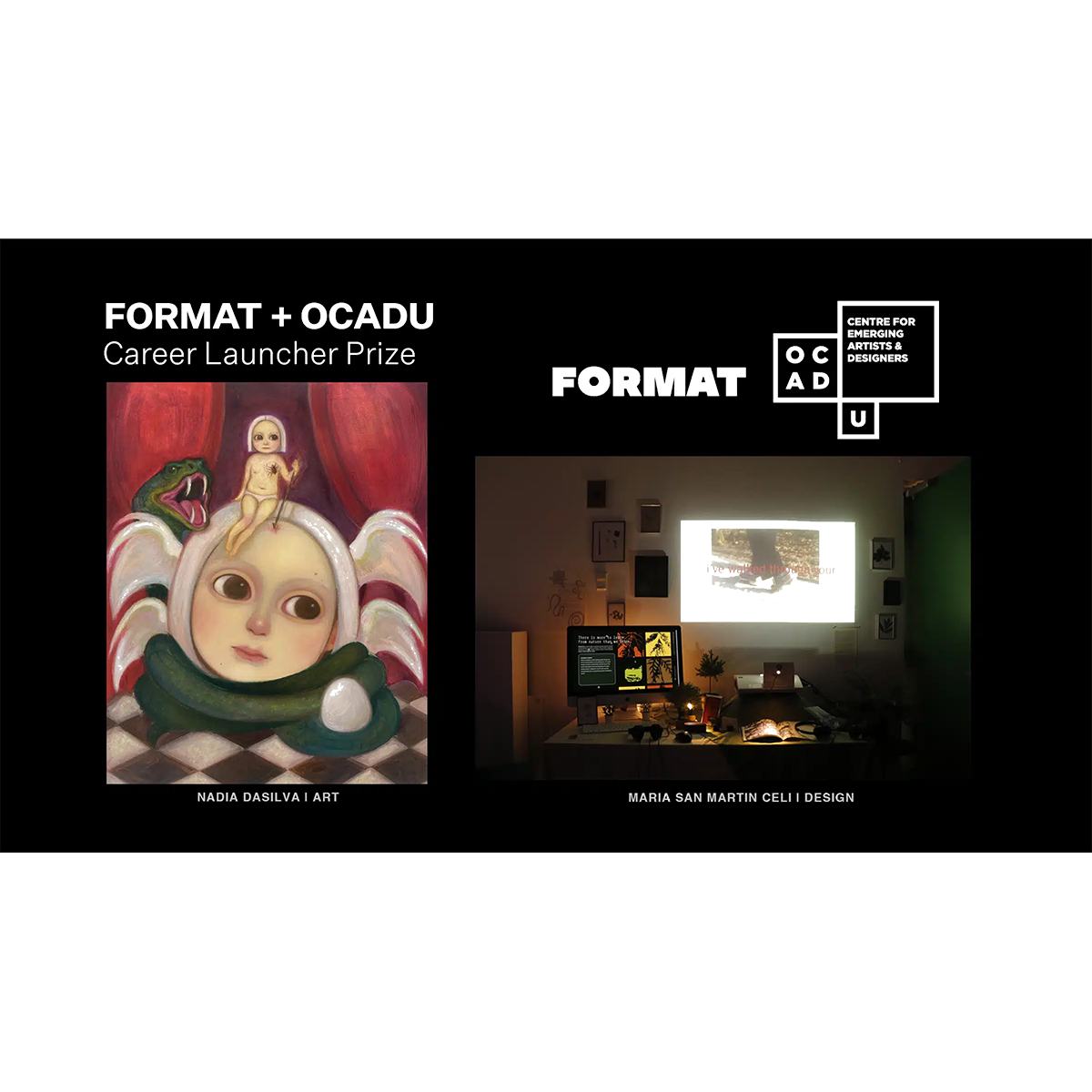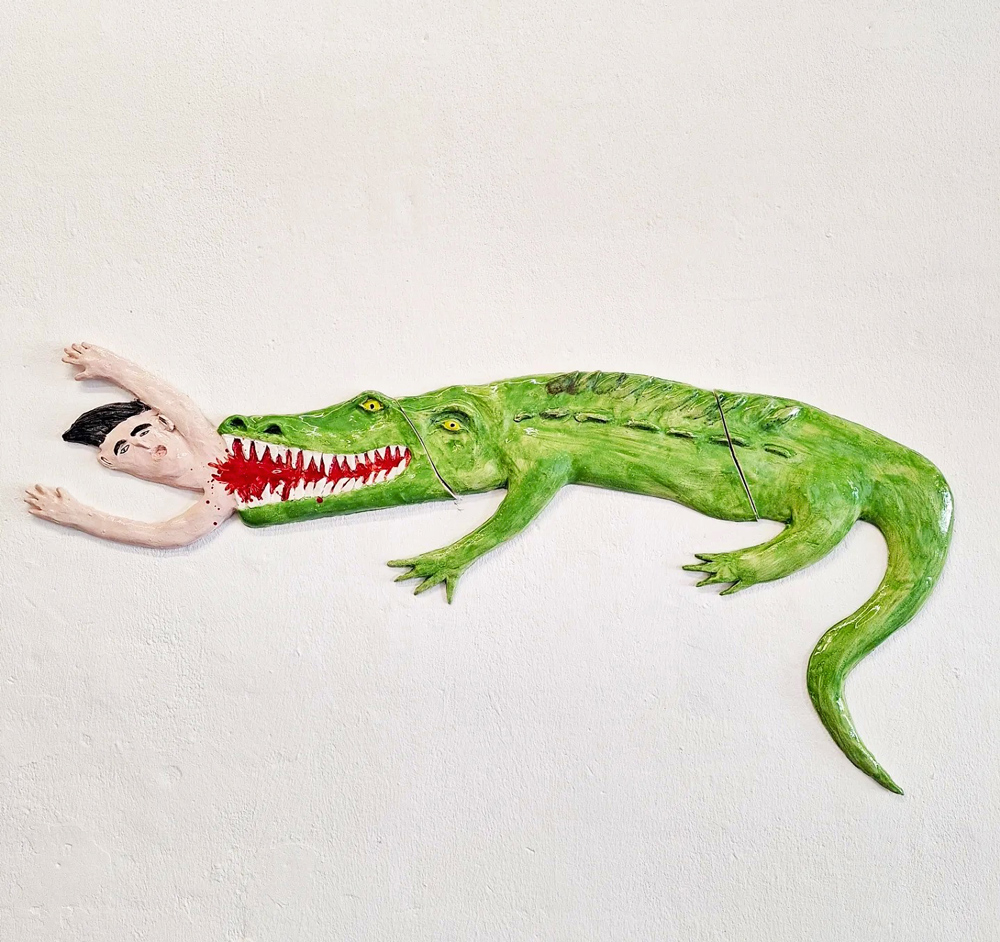Wir alle haben schon Fotos von Planeten gesehen, die im Weltraum umherschweben, aber hast du dir jemals überlegt, wie ein Schnappschuss eines Schwarzen Lochs aussehen könnte? Nicht die computergenerierten Renderings, die du auf Google Images oder deinem Standard-Desktop-Hintergrund siehst, sondern ein echtes Foto von diesem Ding.
Es mag wie ein weit hergeholtes Konzept erscheinen, aber die Ereignishorizont-Teleskop Projekt macht genau das. Es ist eine außergewöhnliche Kollision von Fotografie und Weltraumwissenschaft.
Das ist so, als würdest du draußen stehen und versuchen, ein Foto von einer DVD auf dem Mond zu machen.
Das Team des Event Horizon Teleskops plant, das weltweit erste Foto des supermassiven Schwarzen Lochs Sagittarius A* (ausgesprochen Sagittarius "A" Star) in der Milchstraße aufzunehmen. Trotz seines beängstigenden Namens ist das Schwarze Loch selbst 24 Millionen km groß und damit 17 Mal größer als die Sonne. Das mag riesig klingen, ist aber ziemlich mickrig, wenn man es mit dem größten jemals gefundenen Schwarzen Loch vergleicht, das schätzungsweise 21 Milliarden Mal so groß wie die Sonne ist.
"Unsere Herausforderung ist, dass wir versuchen, ein Bild von etwas zu machen, das sehr, sehr weit weg ist", sagt Feryal Ozel, EHT-Teammitglied und Professor für Astronomie und Physik an der Universität von Arizona. "Unser Objekt ist so weit weg und so klein am Himmel, dass es so ist, als würde man draußen stehen und versuchen, eine DVD auf dem Mond zu fotografieren.

Ein modellierter Schatten des Schwarzen Lochs (links) und zwei simulierte Beobachtungen von Sgr A* mit einem 7-Teleskop und einem 13-Teleskop Array (Fish & Doeleman)
Und weit weg ist er in der Tat. Das Sagittarius A* ist kühle 25.000 Lichtjahre von uns auf der Erde entfernt. Theoretisch wäre ein Teleskop von der Größe unseres Planeten in der Lage, ein Bild des schwer fassbaren schwarzen Lochs zu machen. Da ein solches Unterfangen buchstäblich unmöglich ist, besteht die einzige Möglichkeit für Wissenschaftler/innen, ein Foto von Sagittarius A* zu machen, darin, neun verschiedene Teleskope zu koordinieren, um das Schwarze Loch in kurzer Zeit zu beobachten und ein Bild davon zu machen.
Die Teleskope sind auf der ganzen Welt verteilt, mit Stationen in der Antarktis, Chile, Hawaii, Deutschland, Spanien, Mexiko und Arizona. Jedes der Teleskope wird das Signal zu unterschiedlichen Zeiten über einen Zeitraum von etwa einer Woche im Frühjahr nächsten Jahres aufzeichnen, eine Strategie, die die gleiche Art von Endprodukt erzeugen wird, die ein erdgroßes Gerät erzeugen würde.
Auch wenn bei diesem Projekt nicht viel Platz für Kreativität ist, sind die Art und Weise, wie die Teleskope über der Erde miteinander verbunden werden, und die Kommunikation zwischen ihnen ziemlich einzigartig. Das Team nutzt spezielle Aufnahmetechniken, um mit diesen Teleskopen eine Kamera von der Größe der Erde zu bauen. Wenn das kein großer Wurf ist, wissen wir nicht, was es ist.
Wir glauben zu wissen, wie ein Schwarzes Loch aussehen sollte, aber um es herum wirbelt Gas, und dieses Gas kann verrückte Dinge tun.
"Mein Lieblingsteil bei der Arbeit an diesem Projekt ist die Vorbereitung auf das, was wir sehen könnten", erklärt Ozel. "Weil unsere Teleskope so weit über die Erde verstreut sind, müssen wir daran arbeiten, unser Bild so scharf wie möglich zu machen. Wenn man ungefähr weiß, wonach man sucht, gibt es Techniken zur Bildrekonstruktion, die man anwenden kann. Der Teil, an dem ich am meisten gearbeitet habe, ist der Versuch, sich auf alle Möglichkeiten vorzubereiten. Wir glauben zu wissen, wie ein Schwarzes Loch aussehen sollte, aber um es herum wirbelt Gas, und dieses Gas kann verrückte Dinge tun."
Wirbelndes Gas ist nicht die einzige Merkwürdigkeit, mit der Ozel und ihr Team beim Event Horizon Projekt konfrontiert werden. Das EHT-Team muss eine Reihe wissenschaftlicher und anderer Herausforderungen meistern, um dieses Foto Wirklichkeit werden zu lassen. Zunächst einmal ist die Ausrüstung für jedes Teleskop so speziell, dass sie für jedes Gerät, das an dem Projekt beteiligt ist, eigens gebaut werden muss. Jedes Teleskop braucht außerdem eine Atomuhr, die mit einer Genauigkeit von einer Milliardstel Sekunde messen kann - also ein bisschen genauer als deine durchschnittliche Casio.
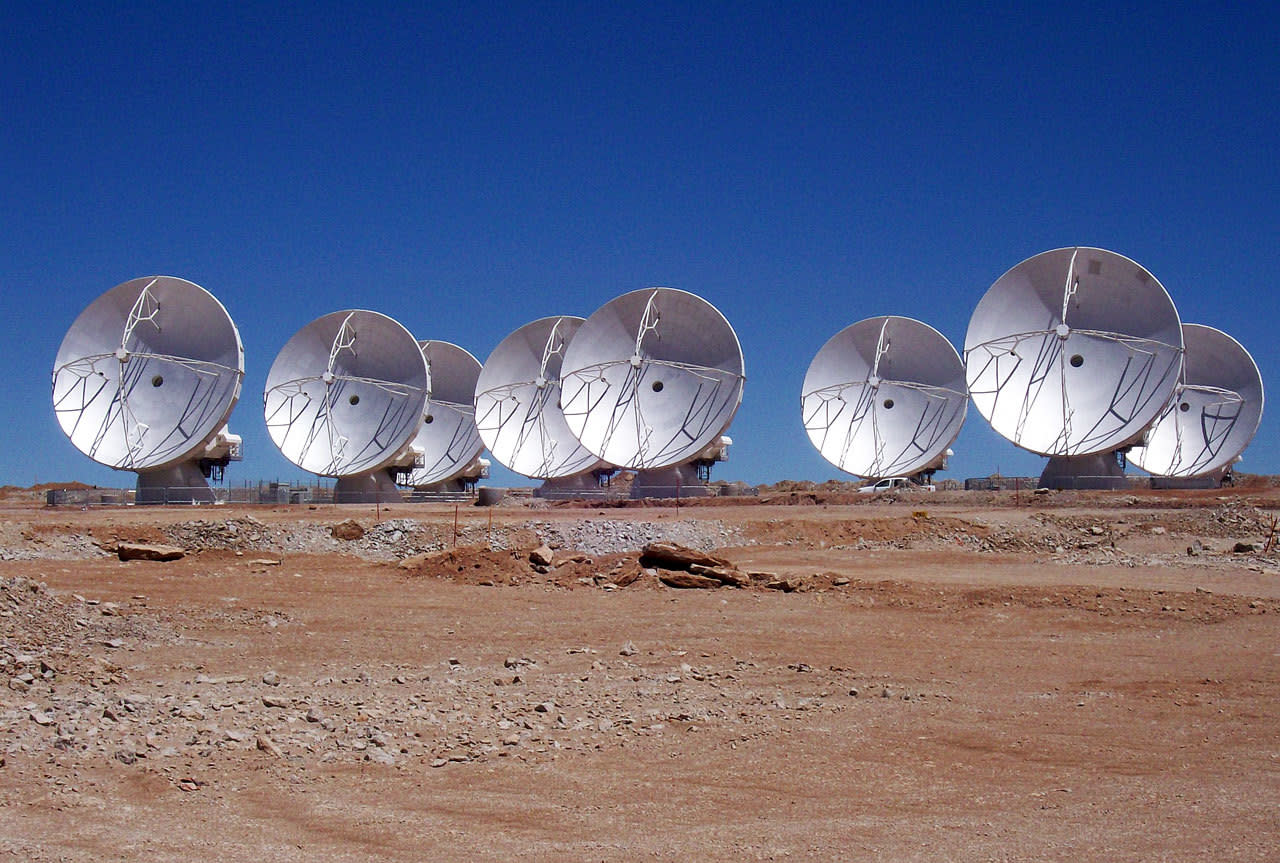
EHT-Teleskope
Jedes Teleskop, das das Schwarze Loch beobachtet, hat nur ein begrenztes Beobachtungszeitfenster, da die Teleskope selbst nicht mobil sind. Das stellt eine weitere große Herausforderung dar, denn Sagittarius A* ist nicht statisch, sondern bewegt sich am Himmel. Da das Team versucht, bestimmte Teleskope rund um die Erde zu koordinieren, können die Beobachtungen bis zu zwölf Stunden dauern. "Das ist so, als würde man ein Bild Pixel für Pixel ausfüllen", erklärt Ozel.
Das gesamte Array-Bild wird in einer Woche Anfang März oder April 2017 "geschossen". Diese Woche wird dem Team aber möglicherweise nicht ausreichen, um ein klares Bild zu erhalten, denn sie möchten das Experiment wiederholen und im Laufe der Zeit noch mehr Daten sammeln. "Wir wollen sicherstellen, dass wir das Schwarze Loch nicht zu einem bestimmten Zeitpunkt betrachten. In der Wissenschaft hoffen wir immer darauf, Dinge zu wiederholen, also hoffen wir, dass wir das in den nächsten Jahren wiederholen können", sagt sie.
Der menschliche Aspekt des Event Horizon Projekts ist eine weitere große Herausforderung für Ozel und ihr Team. Die Zusammenarbeit bei der Aufnahme von Sagittarius A* ist geradezu astronomisch. Ozel arbeitet an diesem Projekt mit einem Team von über 200 Wissenschaftlern an mehr als 20 verschiedenen Institutionen rund um den Globus. Das ist ein gewaltiges Gemeinschaftsprojekt, das ein ausgeprägtes Verständnis für die verschiedenen Kulturen auf der ganzen Welt, ein gutes Gespür für die politischen Zusammenhänge bei der Verwendung verschiedener Instrumente und ein ausgeprägtes Bewusstsein dafür erfordert, dass nicht alle Wissenschaftlerinnen und Wissenschaftler auf dieselbe Art und Weise arbeiten oder kommunizieren.
Es ist eine große Herausforderung, dafür zu sorgen, dass jeder seinen Namen bekommt. Stell dir vor, du versuchst, ein Bild mit 200 Fotografen aufzunehmen, die alle ihren Namen drauf haben wollen!
"Nicht alle Wissenschaftler/innen sind darauf trainiert, in großen Gruppen zusammenzuarbeiten, und der soziologische Aspekt macht es zu einer Herausforderung", erklärt Ozel. "Es gibt viele introvertierte Menschen oder Menschen mit unterschiedlichen Zwängen gegenüber der Institution, mit der sie arbeiten. Es ist eine große Herausforderung, dafür zu sorgen, dass jeder die Anerkennung bekommt. Stell dir vor, du machst ein Bild mit 200 Fotografen, die alle ihren Namen drauf haben wollen!"
Die Vorfreude auf das Event Horizon Teleskop-Projekt steigt weiter, denn das weltweit erste Foto eines Schwarzen Lochs ist nur noch wenige Monate davon entfernt, Realität zu werden. Unabhängig von dem Bild, das dieses globale Team produziert, sind wir uns sicher, dass das Endprodukt des Event Horizon-Projekts die Welt in Staunen versetzen wird.
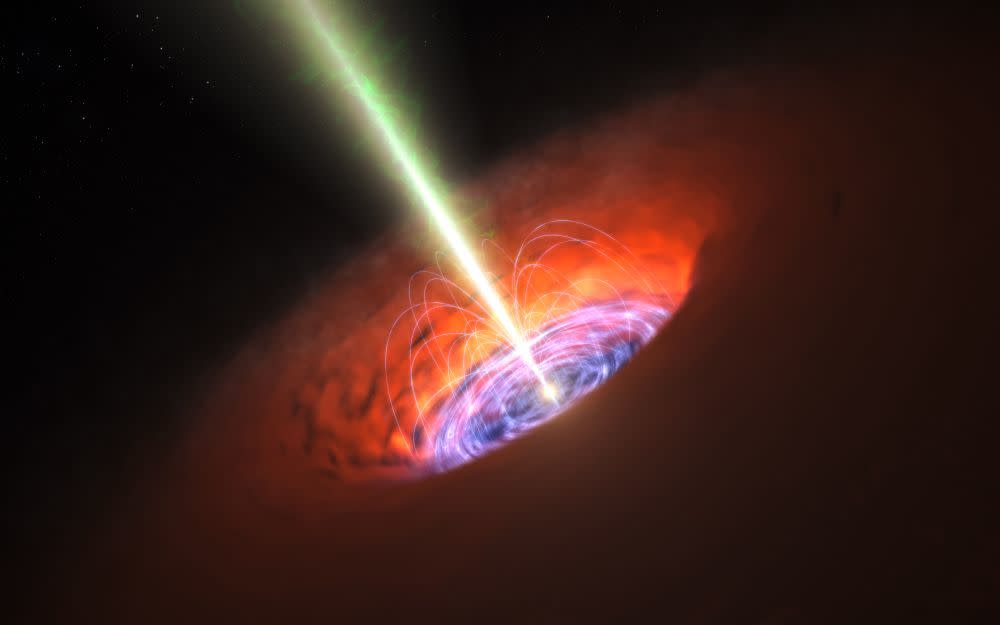
Künstlerisches Konzept eines Schwarzen Lochs (ESO/L. Calçada)
